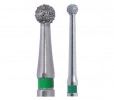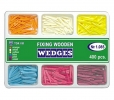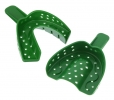Micro-gaps and osseous overload in the implant-abutment connection are the most common causes of peri-implant bone resorption and implant failure. These undesirable events can be visualized on standardized three-dimensional finite element models and by radiographic methods. The present study investigated the influence of 7 available implant systems (Ankylos, Astra, Bego, Brånemark, Camlog, Straumann, and Xive) with different implant-abutment connections on bone overload and the appearance of micro-gaps in vitro. The individual geometries of the implants were transferred to three-dimensional finite element models. In a non-linear analysis considering the pre-loading of the occlusion screw, friction between the implant and abutment, the influence of the cone angle on bone strain, and the appearance of micro-gaps were determined. Increased bone strains were correlated with small (< 15°) cone angles. Conical implant-abutment connections efficiently avoided micro-gaps but had a negative effect on peri-implant bone strain. Bone strain was reduced in implants with greater wall thickness (Ankylos) or a smaller cone angle (Bego). The results of our in silico study provide a solid basis for the reduction of peri-implant bone strain and micro-gaps in the implant-abutment connection to improve long-term stability
Source:PMID:23045362 PubMed - indexed for MEDLINE





